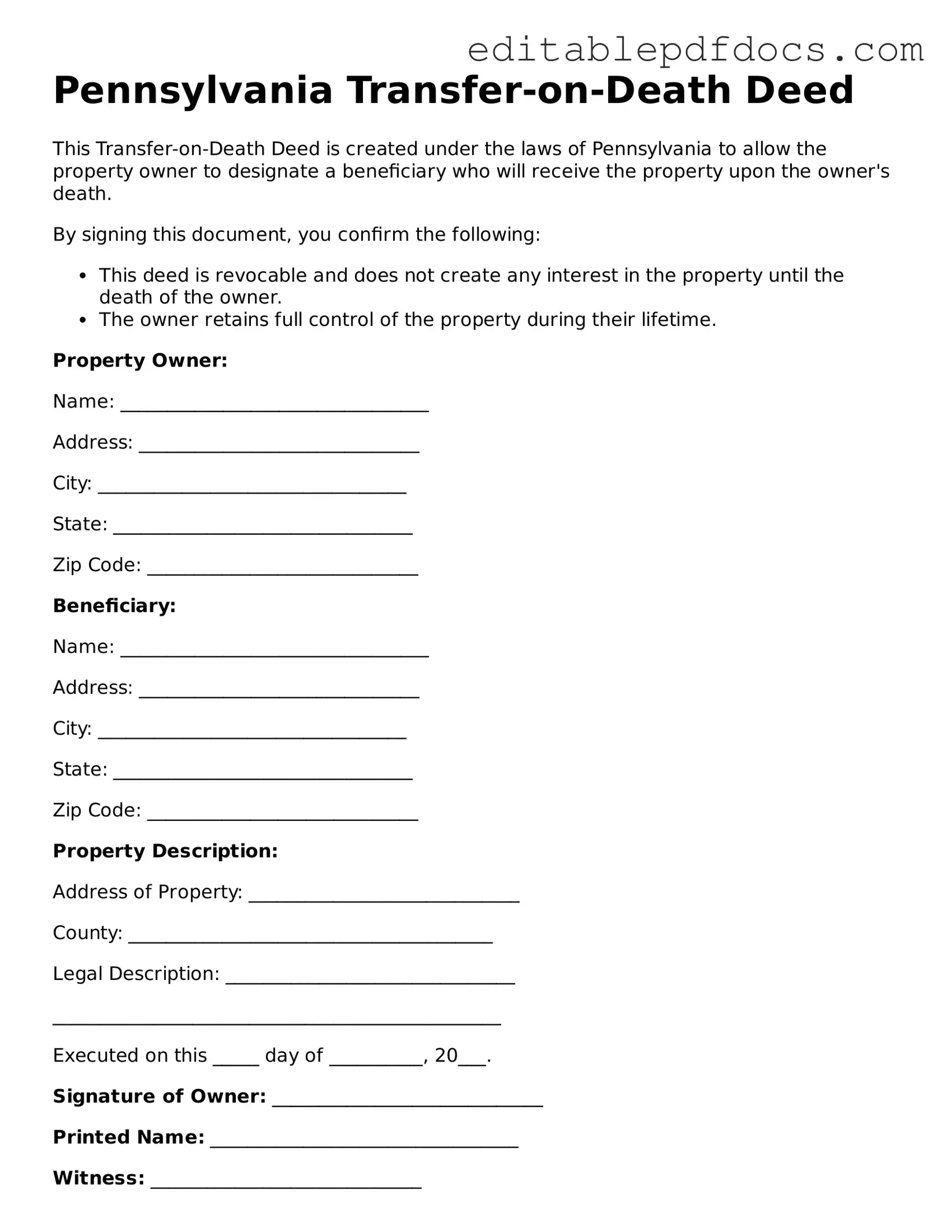Filling out the Pennsylvania Transfer-on-Death Deed form can be a straightforward process, but many people make common mistakes that can lead to complications. One frequent error is failing to include all required information. It’s essential to provide complete details about the property and the beneficiaries. Missing even a small piece of information can cause delays or invalidate the deed.
Another mistake involves not properly identifying the property. The form requires a clear description of the property being transferred, including the address and parcel number. Inaccuracies in this section can create confusion and may lead to disputes among heirs.
Some individuals overlook the need for notarization. A Transfer-on-Death Deed must be signed in the presence of a notary public. Without this step, the deed may not be legally recognized, which defeats its purpose. It’s crucial to ensure that all signatures are properly notarized before submission.
People often forget to record the deed after it is completed. Simply filling out the form is not enough; it must be filed with the county recorder of deeds. Failing to do so means the deed will not take effect upon the death of the property owner, leaving the property subject to probate.
Another common error is not updating the deed when circumstances change. Life events such as marriage, divorce, or the death of a beneficiary can affect the validity of the deed. Regularly reviewing and updating the document ensures it reflects the current intentions of the property owner.
Some may not fully understand the implications of the Transfer-on-Death Deed. It’s important to know that this deed does not transfer ownership until the owner passes away. Misunderstanding this can lead to confusion about property rights while the owner is still alive.
People sometimes neglect to consult with family members about their intentions. Open communication can prevent misunderstandings and disputes among heirs. Discussing the deed with beneficiaries ensures everyone is aware of the property owner’s wishes.
Another mistake is using outdated forms. Laws can change, and using an old version of the Transfer-on-Death Deed form may lead to issues. Always ensure that you are using the most current version available from official sources.
Finally, some individuals may rush through the process. Taking the time to carefully complete the form and double-check all entries can prevent mistakes. A rushed approach often leads to errors that could have been easily avoided.
